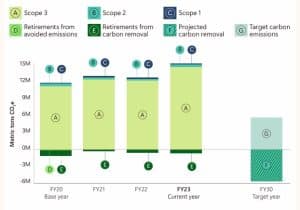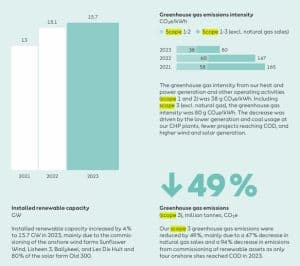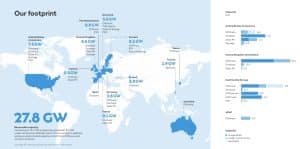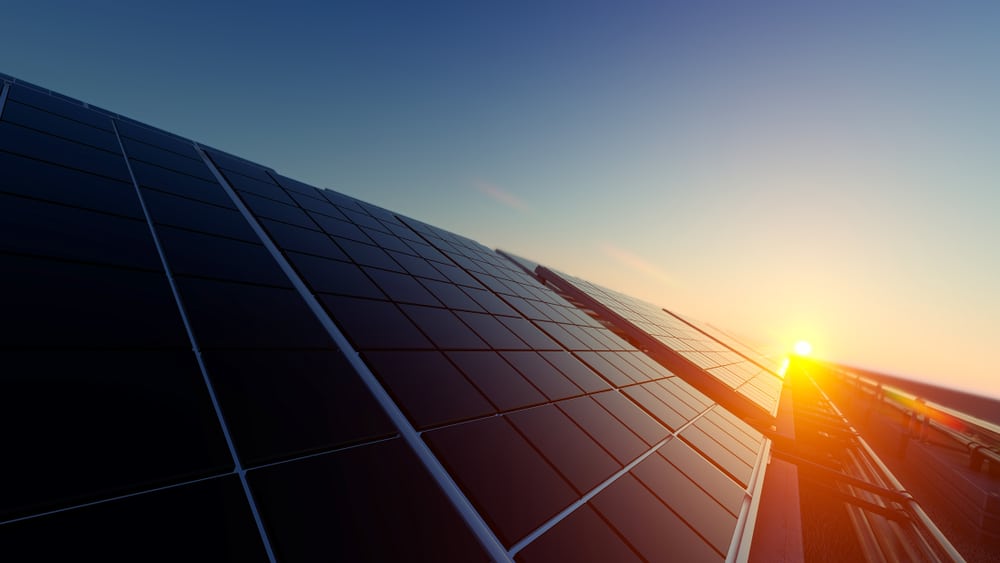Ørsted has announced a significant expansion of its partnership with Microsoft, agreeing to sell an additional 1 MT of carbon removal over 10 years from the Avedøre Power Station. This is part of the bioenergy carbon capture and storage (BECCS) initiative known as the ‘Ørsted Kalundborg CO2 Hub’. This new deal builds on Microsoft’s existing commitment to purchase 2.67 million tonnes of CO2 from the Asnæs Power Station, bringing their total contracted carbon removal to 3.67 MTs.
The Key Highlights of the Ørsted-Microsoft Deal
1. Carbon Capture Implementation
As part of the ‘Ørsted Kalundborg CO2 Hub’, Ørsted will install carbon capture technology at the wood chip-fired Asnæs Power Station in Kalundborg, western Zealand, and the straw-fired boiler at Avedøre Power Station in Greater Copenhagen. The combined heat and power plants will capture 430,000 tonnes of biogenic CO2 annually, which will then be transported to a storage reservoir in the Norwegian North Sea for permanent storage. The hub is expected to be operational by early 2026.
2. Microsoft’s Carbon Removal Commitment
Starting in 2026, Microsoft will receive one million tons of carbon removal from the straw-fired unit at Avedøre Power Station. This plant uses locally sourced straw, an agricultural by-product, to generate electricity and district heating. By capturing and storing biogenic carbon from these biomass-fired plants, the process not only reduces CO2 emissions but also removes carbon from the atmosphere, creating negative emissions. This is because biogenic carbon from sustainable biomass is part of a natural cycle.
3. Supporting Sustainable Development
The collaboration between Ørsted and Microsoft is crucial for advancing the ‘Ørsted Kalundborg CO2 Hub’, especially since bioenergy-based carbon capture and storage technology is still emerging. The project, which received a subsidy from the Danish Energy Agency, included anticipated revenue from carbon removal certificates in its investment decision. This competitive pricing was a key factor in the subsidy award.
4. Importance of BECCS for Climate Goals
The UN’s Intergovernmental Panel on Climate Change (IPCC) has highlighted the importance of carbon removal technologies like BECCS for limiting global warming. Projects such as the ‘Ørsted Kalundborg CO2 Hub’ are essential for helping companies like Microsoft achieve their sustainability targets and contribute to global climate goals.
Is Microsoft Leading the Charge Toward a Carbon-Neutral Future?
Decoding its carbon emissions and net-zero plans
In 2023, Microsoft expanded its renewable energy assets to over 19.8 gigawatts (GW), incorporating projects across 21 countries. Additionally, last year the company secured contracts for 5,015,019 MTs of carbon removal to be retired over the next 15 years. Its net-zero plans focus on three primary areas:
- Reducing carbon emissions
- Increasing the use of carbon-free electricity
- Removing carbon
The company’s latest ESG report suggests that the pathway to becoming carbon-negative has the following milestones:
Reducing Scope 1 and Scope 2 Emissions
Microsoft aims to nearly eliminate its Scope 1 and 2 emissions by increasing energy efficiency, decarbonizing its operations, and achieving 100% renewable energy by 2025. It achieved a 6% reduction in its Scope 1 and 2 emissions from the 2020 base year by advancing clean energy procurement, implementing green tariff programs, and using unbundled renewable energy certificates
Reducing Scope 3 Emissions
Microsoft’s Scope 3 emissions account for more than 96% of its total emissions. Most of these emissions come from purchased goods and services, capital goods, downstream, and the use of sold products downstream. By 2030, Microsoft aims to cut its Scope 3 emissions by 50% from the 2020 baseline.
Although Scope 3 emissions have surged by 30.9% since 2020, Microsoft remains committed to expanding clean energy purchases across its supply chain. It aims to invest in the decarbonization of hard-to-abate industries like steel, concrete, and other materials used in its data centers.
Tracking progress toward carbon negative by 2030
Microsoft’s overall emissions increased by 29.1% in FY23 from the base year. Additionally, it retired 605,354 MTs of carbon removal as part of its net zero goals.

Can Ørsted’s Bold Strategies Propel U.S. to a Carbon-Free Future? Find Out…
Ørsted has committed to achieving net-zero emissions across its value chain by 2040, aiming to reduce emissions through various initiatives, including renewable energy projects, energy efficiency measures, and engaging stakeholders in sustainable practices.
The company reports its greenhouse gas emissions under three categories: Scope 1, Scope 2, and Scope 3, as defined by the Greenhouse Gas (GHG) Protocol.
Reducing Scope 1 and Scope 2 Emissions
Ørsted significantly reduced its Scope 1 emissions by transitioning from fossil fuels to renewable energy sources like wind and biomass. For Scope 2 emissions, Ørsted focused on increasing energy efficiency and sourcing renewable energy to reduce the emissions from purchased electricity and heat.
- Scope 1 and 2 emissions: FY2023 was 38g CO2e/kWh
Reducing Scope 3 Emissions
To address Scope 3 emissions, Ørsted engages with suppliers, optimizes logistics, and promotes sustainable practices across its value chain, targeting emissions from fuel production and transportation, manufacturing of wind turbine components, business travel, and the use of sold products.
- Scope 3 emissions: FY2023 was 80g CO2e/kW
The image depicting Ørsted’s installed renewable capacity and GHG emissions intensity
 source: Ørsted
source: Ørsted
Key sustainability targets
- Scope 1-2 emissions intensity: 98 % reduction by 2025 and 99 % reduction by 2030 (from 2006)
- Scope 1-3 emissions intensity (excl. natural gas sales): 77 % reduction by 2030, and 99 % reduction by 2040 (from 2018)
- Scope 3 emissions (from natural gas sales): 67 % reduction by 2030, and 90 % reduction by 2040 (from 2018)
Top Clean Energy and Decarbonization Projects
Microsoft:
The company invests in renewable energy sources such as wind, solar, and hydroelectric power, and implements energy efficiency measures across its operations. Like its partnership with Ørsted, and other CDR projects alike to offset emissions and remove CO2 from the atmosphere. Through these efforts, Microsoft aims to become carbon-negative by 2030, addressing both its direct emissions and those across its entire value chain.
Some remarkable decarbonization achievements of Microsoft include:
- Microsoft to Buy Carbon Removal Credits from CarbonCapture (carboncredits.com)
- Microsoft and Stockholm Exergi Strike Historic Deal for 3.33 MTs of Carbon Removal • Carbon Credits
- Microsoft Teams Up with Aker Carbon Capture and CO280 to Boost CDRs • Carbon Credits
- Microsoft to Purchase 95,000 Biochar Carbon Removal Credits from The Next 150 • Carbon Credits
Orsted:
Ørsted is leading the way in clean energy and decarbonization. It is transitioning from fossil fuels to renewable energy sources such as wind, solar, and biomass. The company majorly focuses on:
- Large-scale offshore wind farms
- Onshore wind energy
- Bioenergy carbon capture and storage projects.
- Solar power and grid stabilization
These initiatives aim to reduce and remove CO2 emissions, contributing to Ørsted’s goal of achieving net-zero emissions across its value chain by 2040. Thus, Ørsted is making significant strides in combating climate change and promoting sustainable energy solutions through these projects.
Ørsted’s Global Footprint
 source: Ørsted
source: Ørsted
Notably, Ole Thomsen, Senior Vice President and Head of Ørsted’s Bioenergy business has commented:
“This expanded collaboration with Microsoft is a testament to our shared vision for a sustainable future. By combining Ørsted’s expertise in bioenergy carbon capture and storage with Microsoft’s commitment to reducing its carbon footprint, we’re showcasing how strategic relations can accelerate the transition to a greener economy.”

